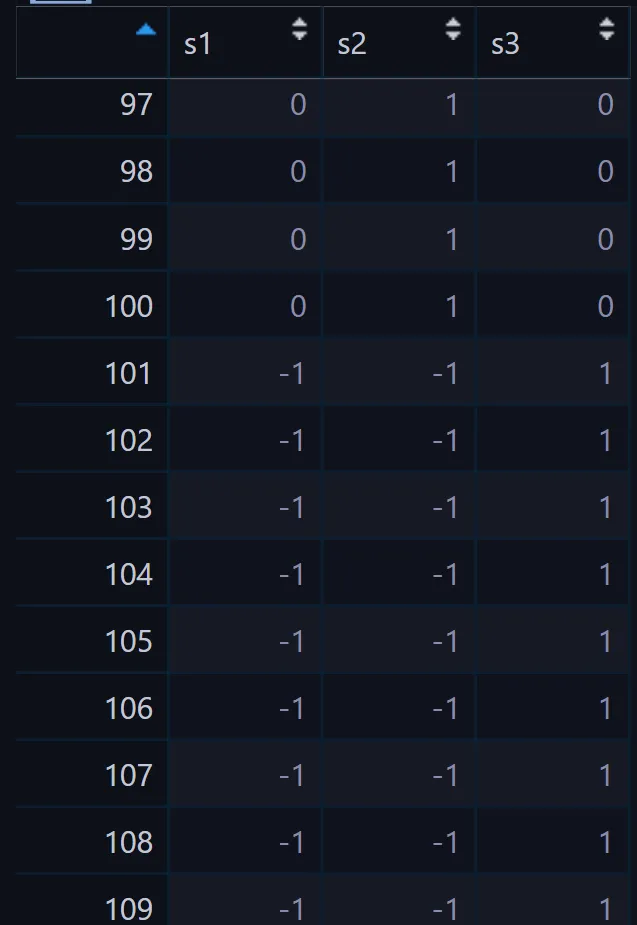我对将lm-syntax翻译成lavaan很感兴趣,特别是我想要一个影响编码的交互作用,涉及到一个因子x数字变量,当因子有>2个级别时。 (提醒: 影响编码 是对分类变量进行虚拟编码的替代方法,使得编码为-1、1和0。)
下面是一个最小的示例(无意义)。你可以看到lm(线性回归)语法,然后是相应的lavaan语法(回归部分)。它适用于没有交互作用的回归,但不适用于交互作用。
首先考虑对没有交互作用的影响编码因素进行回归。 这个有效
下面是一个最小的示例(无意义)。你可以看到lm(线性回归)语法,然后是相应的lavaan语法(回归部分)。它适用于没有交互作用的回归,但不适用于交互作用。
首先考虑对没有交互作用的影响编码因素进行回归。 这个有效
library(lavaan)
# Use iris data as minimal example
#
# 1. Linear regression model
# Change contrasts to effects-coding
contrasts(iris$Species) <- contr.sum(3)
# Linear regression
lmmodel <- Sepal.Length ~ Species # the regression model
lmfit <- lm(lmmodel, iris) # fit it
# 2. SEM
# first, re-code the factors
iris$s1 <- contrasts(iris$Species)[iris$Species, 1] # Numeric and effects-coed
iris$s2 <- contrasts(iris$Species)[iris$Species, 2] # - " -
semmodel <- 'Sepal.Length ~ s1 + s2' # the SEM model
semfit <- sem(semmodel, iris) # fit it
# 3. Compare the coefficients lm vs. sem, should be equal (and are equal)
cbind(coef(lmfit)[-1], coef(semfit)[-length(coef(semfit))])
# [,1] [,2]
# Species1 -0.83733333 -0.83733330
# Species2 0.09266667 0.09266664
这是我如何利用交互进行操作的方式 我做错了什么吗?
# 1. Linear regression w/ interaction
lmmodel <- Sepal.Length ~ Species + Species:Sepal.Width
lmfit <- lm(lmmodel, iris)
# 2. SEM
iris$s3 <- as.numeric(iris$Species=='virginica') # Code third species
iris$s1_w <- iris$s1 * iris$Sepal.Width # Numeric interaction
iris$s2_w <- iris$s2 * iris$Sepal.Width # - " -
iris$s3_w <- iris$s3 * iris$Sepal.Width # - " -"
semmodel <- 'Sepal.Length ~ s1 + s2 + s1_w + s2_w + s3_w'
semfit <- sem(semmodel, iris)
# 3. Compare the coefficients lm vs. sem
cbind(coef(lmfit)[-1], coef(semfit)[-length(coef(semfit))])
# [,1] [,2]
# Species1 -0.7228562 -0.7228566
# Species2 0.1778772 0.1778772
# Speciessetosa:Sepal.Width 0.6904897 0.6904899
# Speciesversicolor:Sepal.Width 0.8650777 0.8650779 <----- equal
# Speciesvirginica:Sepal.Width 0.9015345 2.4571023 <----- not equal

sem()是 lavaan 函数,代码中的semmodel是 lavaan 语法。我正在尝试在 lavaan 中建立回归模型 "Sepal.Length ~ Species + Species:Sepal.Width"。 - JBJlm的系数应该等于sem的系数(请参见#2 https://psu-psychology.github.io/r-bootcamp-2018/talks/lavaan_tutorial.html)。在我的example2中,一个系数不同。似乎正确的系数(称之为`b*`)等于`b-c-d`(其中`b` = s3_w效应,c= s2_w效应,d= s1_w效应)。考虑到因素是效果编码,这似乎是正确的。我想知道的是如何使lavaan产生正确的系数(例如:0.9015)。 - JBJ